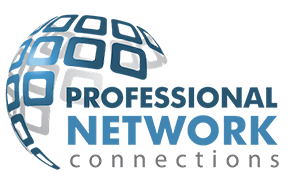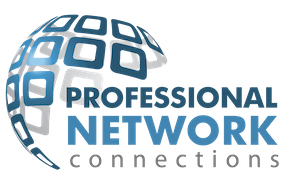Top 3 Email Templates For Following Up With Your Networking Connections
For most of us, networking events are valuable tools for forward momentum. By making new connections, we are able to build out contact lists and advance our careers. However, many evenings spent shaking hands can go to waste if we are ineffective at keeping in touch with those contacts after we go home.
To make sure you’re rising to your fullest potential, Professional Network Connections has put together these top 3 email templates for following up with your new connections.
Important Data Collection

There are some crucial steps you should take during networking events in preparation for sending follow up emails. You’ll want to arrange a system for collecting information that is user-friendly.
Consider adding names, emails, and phone numbers to your phone contacts or a digital list in your phone’s note application. If you’re determined to collect business cards, have a safe place to store them, and then consolidate later on by copying their contents into an address book or journal.
Whether you choose to record your connections digitally or manually, be sure to take detailed notes. Write down details about the conversations you have with new people. You want to remember each new connection’s name, line of work, place of business, and any other interesting facts you learn that might help your interaction feel more memorable in the future.
For tips that might help you achieve this goal, consult this list of the 7 best networking questions.

-
Initial Follow Up Emails
About a week after you’ve attended a networking event and gained a handful of new contacts, it’s time to draft follow-up emails. Be as simple and memorable as possible by keeping your messages short and to the point.
First, title your subject line, “[your name] from [the event you attended].” Then, in the body of your email, address your recipient by his first or full name, if you have it. Say that you enjoyed meeting at the past networking event, and mention something specific about the conversation you had while you were there.
Do not attempt to garner referrals or sell anything in this email. All you want to do is reinforce your new connection, and make sure your recipient remembers you. At the end of your message, include your contact information, a link to your LinkedIn or a comparable profile, and an indication that you’d like to speak again soon.

-
Referral Emails
If you’re someone who only ever takes from professional relationships, people are going to be less receptive towards you. Instead of approaching networking connections with the question of what they have to offer you, evaluate what business you can refer to them. This may seem counter-intuitive, but it will likely be a breath of fresh air that could result in your contact returning the favor.
For this email, be direct and concise. Call it, “Business referral from [your name].” Clearly explain how someone you already know might mutually benefit from working with your new networking contact, and CC that person on the email. Offer to introduce the two parties, and give your contact information as well as brief reminders about how you know each person.
Don’t ask for anything in return. Sending clients and resources to your networking contacts will help them feel your relationship is genuine and naturally incline them to include you in their future business dealings.

-
Meeting Request Emails
According to Rebekah Hurworth’s Bizversity seminar called, “7 Useful Tips to Follow Up After a Networking Event,” it is critical to your relationships’ long term success that you invest time in face to face interactions. Don’t barrate your networking contacts with a one daily email after another; wait a week or two before inviting the most promising ones to coffee or lunch.
Huworth recommends spending no more than an hour and no less than thirty-minutes on these encounters. You want to allow enough time to really get to know each person but not so much time that you seem disrespectful of your contacts’ busy schedules.
Label this email, “[your name] coffee invitation,” or you can replace “coffee” with a substituted meeting location. Then spend a sentence or two reminding your recipient how he knows you and what you spoke about during your last interaction. Politely ask them to meet you to catch up, and offer to drive somewhere in their preferred area. As always include your personal information in the email’s signature.
Email Alternatives

While email is still a hugely effective communication tool, it is not the only one available. Depending on your contact’s personality, line of work, etc., you may also want to branch out and use alternative channels.
Platforms like Facebook, Instagram, LinkedIn, and Twitter are viable options that might yield better responses, so if you’ve reached out through email and haven’t heard back, wait a few days, and send a message using a different messaging application.
However, be careful not to spam your networking connections. Don’t rush the process, and remember you’re ultimately fostering new relationships, not soliciting sales. Be patient. Create space and time between your conversations, so they feel natural.
If someone appears disinterested in your efforts, relax. There are plenty of future networking events you can attend to meet other people. As long as you use these email templates to consistently follow up without acting desperate, you'll have built your professional support team in no-time.


